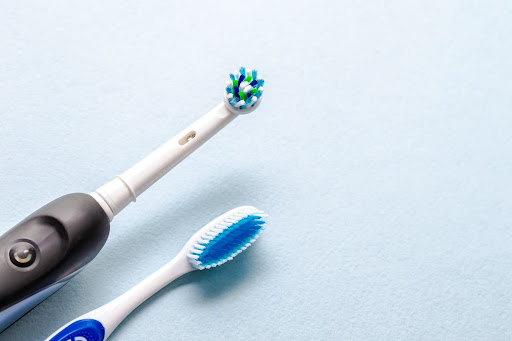
How Often Should You Replace Your Toothbrush?
Most of us know our toothbrushes aren’t meant to last forever. But it can be hard to figure out when our bristles are nearing the end of their lifespan. Some might be surprised that dentists recommend replacing your toothbrush every 12 to 16 weeks. There are also cases when you might need to trade in your toothbrush sooner. If you don’t buy a new toothbrush or electric toothbrush replacement head when needed, it can affect your dental health and spread infection.
So how often should you change a regular toothbrush?
Your toothbrush is your first line of defense against the harmful bacteria that cause gum disease, tooth decay, and bad breath. Following closely after in the tooth care regimen are dental floss and mouthwash.
The two most common types of toothbrushes are Straight and Smooth bristles. Though they look different, they both ultimately get the job done. A Straight bristle brush with an easy-to-grip handle is best to navigate the smaller spaces in your mouth. A soft bristle brush will effectively remove old food and bacteria that can collect around the bases of your teeth.
If you follow the well-known recommendation of brushing your teeth for 2 minutes twice a day, you’re already implementing the steps needed to protect your teeth from cavities.
Brushing your teeth after each meal and sugary snacks is another step you can take to be proactive about preventing tooth decay. Brushing two or more times per day is still considered standard for a manual toothbrush.
At that rate of normal wear and tear, the bristles in your brush will start to fall out and become mangled or twisted within about 3 months but the life of your brush could last up to 4 months. Once the bristles on your toothbrush start to lose their stiffness, the toothbrush is ready for the trash. Without bristles that brush aside food and plaque, your toothbrush quickly becomes ineffective.
How often should you change an electric toothbrush head?
Electric toothbrush heads clean the surface area of your teeth by quickly rotating or vibrating. These toothbrush heads still have nylon bristles that can become worn after regular use. What’s more, those bristles are shorter, which means that they will likely fray quicker. Plan to change out the toothbrush head on your electric toothbrush every 12 weeks, or earlier. Some electric toothbrush heads also have special indicators to let you know when to switch them out, but just be sure to watch for signs of wear and tear on the bristles to know when it’s time to say goodbye to a brush head.
Other reasons to change your toothbrush
If you have been sick, it’s always a good idea to replace your toothbrush as well as the toothbrush of everyone else in your household. Both viral and bacterial infections such as strep throat are of the most concern, and it is best practice to swap your old toothbrush for a new one.
For children, you’ll want to change out toothbrushes more often than every 3 months, as their little mouths can chew and wear things down at a much faster rate. Don’t forget to watch your child when they’re brushing their teeth to make sure they aren’t exposing their brush head to any surface besides their mouth and teeth.
How to take care of your toothbrush
To get the biggest bang for your buck out of your toothbrush, take care of it the way you would any personal grooming or hygiene tool. Don’t share your toothbrush with someone else, even members of your immediate family. If your toothbrush is stored in a cup or container with other toothbrushes, try not to let the heads touch each other.
After brushing, rinse your toothbrush completely with water. You don’t need to use a disinfectant, mouthwash, or hot water to sanitize it. Trying to “sanitize” a toothbrush in this way can spread germs. You also don’t need a special closed container to keep your toothbrush clean when it’s not in use. Some of these containers can encourage mold growth or spread bacteria.
Takeaway
Your toothbrush is an important oral hygiene tool that should be used daily. To maintain your toothbrush and make the most of its lifespan, use only your own toothbrush, store it upright, and let it air dry.
Plan to replace the toothbrushes of every person in your family every 3 to 4 months, and mark your calendar on the date of the purchase so you remember when it’s time to replace them again.
For a free toothbrush, book a bi-annual dental exam, and visit our team at Your Community Dental today!
